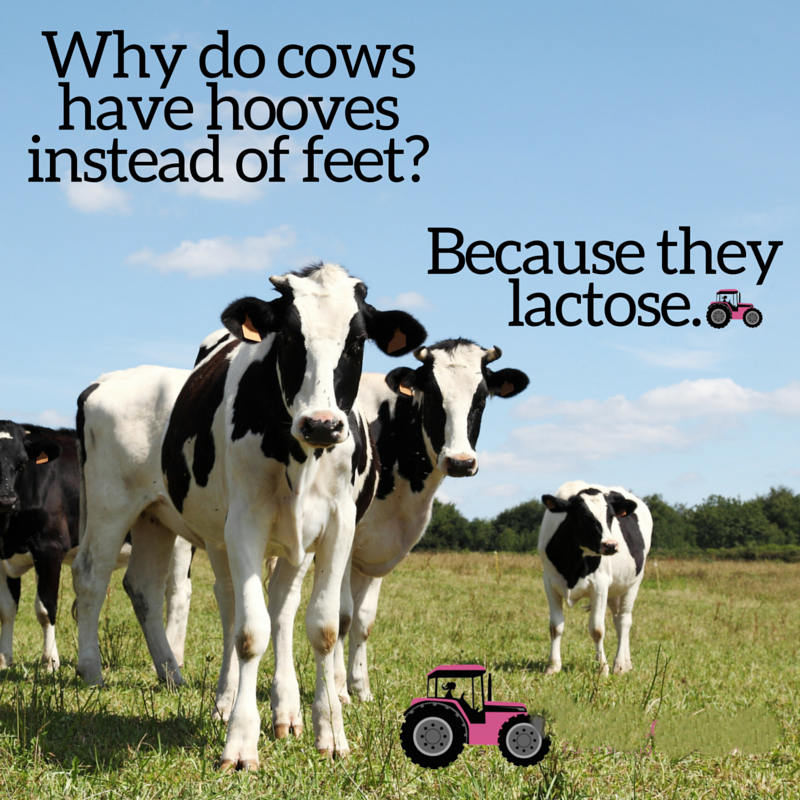


Here at the Old Folks Hotel, unless they were lying, everyone enjoyed reading my article a few weeks ago about life on a farm in the old days. At my current lunch table, we all have two things in common. 1) we are older than dirt, 2) we think today’s generation is more spoiled than soured milk.
So in the spirit of old people and dirt, here’s a reprint from some farm trivia I made up last year. Many of my readers know that I grew up on a farm in Buffalo, AL. Despite the name, there were several large animals raised there, but buffaloes were not among them, at least not by the time of my birth. Many historians say that buffaloes did roam in the Southeast, but by the 1900s their existence had been wiped out by the scariest mammal of all: MAN. Of all the animals we tended, the ones that took the most work were COWS. I’ve mentioned before that I was not a natural cow-milker. (It’s definitely harder than it looks.) I was a great end-user though. Many of my friends remember going down to Collins Drug Store and drinking milkshakes. Bill Bowling says that milk shakes served today are not the foamy, creamy kind served in our youth. He is correct as today’s milkshakes have very little cream in them.
What a difference from the past! When one looks on the shelves of stores today there is whole milk, skim milk, 2% nonfat milk, 1% nonfat milk, buttermilk, cultured butter milk, homogenized milk, pasteurized milk, half/half cream, whole cream and whipped cream.
It has been a while since I schooled my readers to find out whether they are old school or millennial. Take this test of UDDER NONSENSE and we shall see.
What is lactate, cream, curdle, curds, butter and cheese?
What is the average daily production of milk per cow in the US?
What are the two most popular breeds of milk cows?
On average, how many pounds of butter in a gallon of milk?
How long does a cow give milk after the calf is weaned?
How is milk pasteurized?
How is milk homogenized?
How do you make butter?
How do you make cheese?
Why is milk from a cow not for human consumption for the first few days after birthing a calf?
What country is the leader in production of dairy products?
Answers:
It is all different stages of milk usage.
The old timers have given me answers from 1 to 10 gallons daily milking per cow. They are probably right depending on the reproductive stage of the cow. The DAIRY GUY online says the average in the US is 8 gallons per day per cow.
The most popular cows for milk production are Jerseys and Holsteins. Guernseys are popular as well. I am told that Jersey milk has higher cream content, but the Holsteins produce more milk per cow.
There is ¼ lb. of butter per gallon of milk.
If the cow is re-bred the milk production can continue, however, less volume is produced.
Pasteurization is the process of heating up milk and quickly cooling it down.
Homogenization is a mechanical treatment of milk that prevents cream from rising to the surface.
Butter is produced by letting milk spoil or curdle, then churning the curds to separate the cream from the milk.
Cheese is made by heating milk until the liquid part of the milk is converted to a solid.
The first milk taken from a cow after the birth of a calf is loaded with natural chemicals called colostrum unfit for human consumption.
Finding a consistent answer proved difficult. When I narrowed it to the question of What are the World’s Top Five Cow’s Milk Producing countries in 2022, the most common order was: 1) U.S. , 2) India, 3) China, 4) Brazil, 5) Germany.
In small dairies the milk output per day per cow is probably more like 4 gallons a day. This is twice what the Frazer family got from their cows when I was milking (or attempting to milk.)
Dairy farming is a tough life. Milk sells for $4.00 per gallon in markets which means each cow would bring in $16 daily. It is difficult to see how dairy operation is profitable considering the cost of: the milking equipment, the barns and sheds, outside labor, feed for the cows both dry and green, veterinarian services, cooling facilities, containers to fill for marketing, the cost of transportation, distribution of the milk products, and adhering to strict sanitation regulations imposed by the government. It’s a good thing the government then turns around and gives subsidies. I know that’s not a popular thing, but it sounds like they wouldn’t make it otherwise.
The next time you see a millennial complaining while holding a TRIPLE-SIZE LATTE, tell them that all their whining is UDDER NONSENSE.
